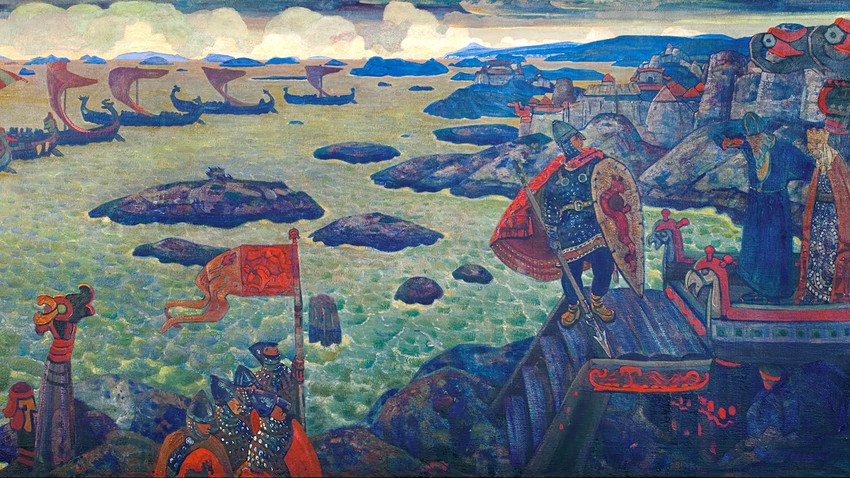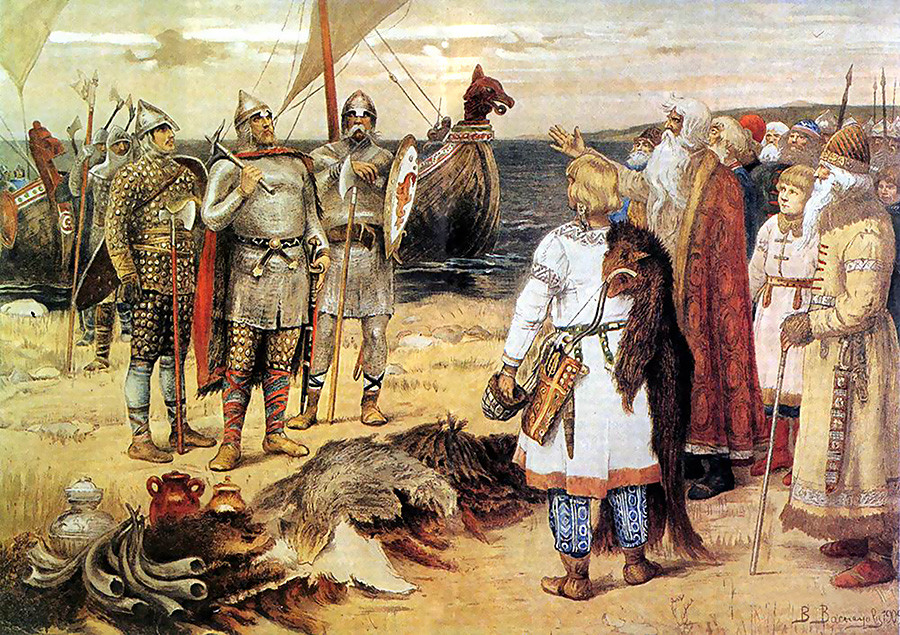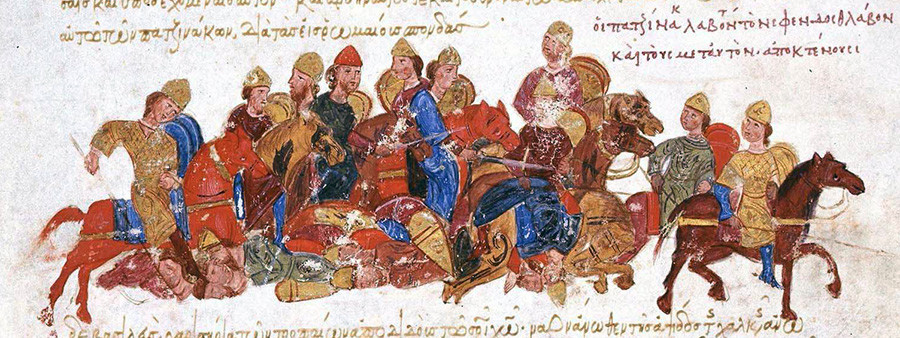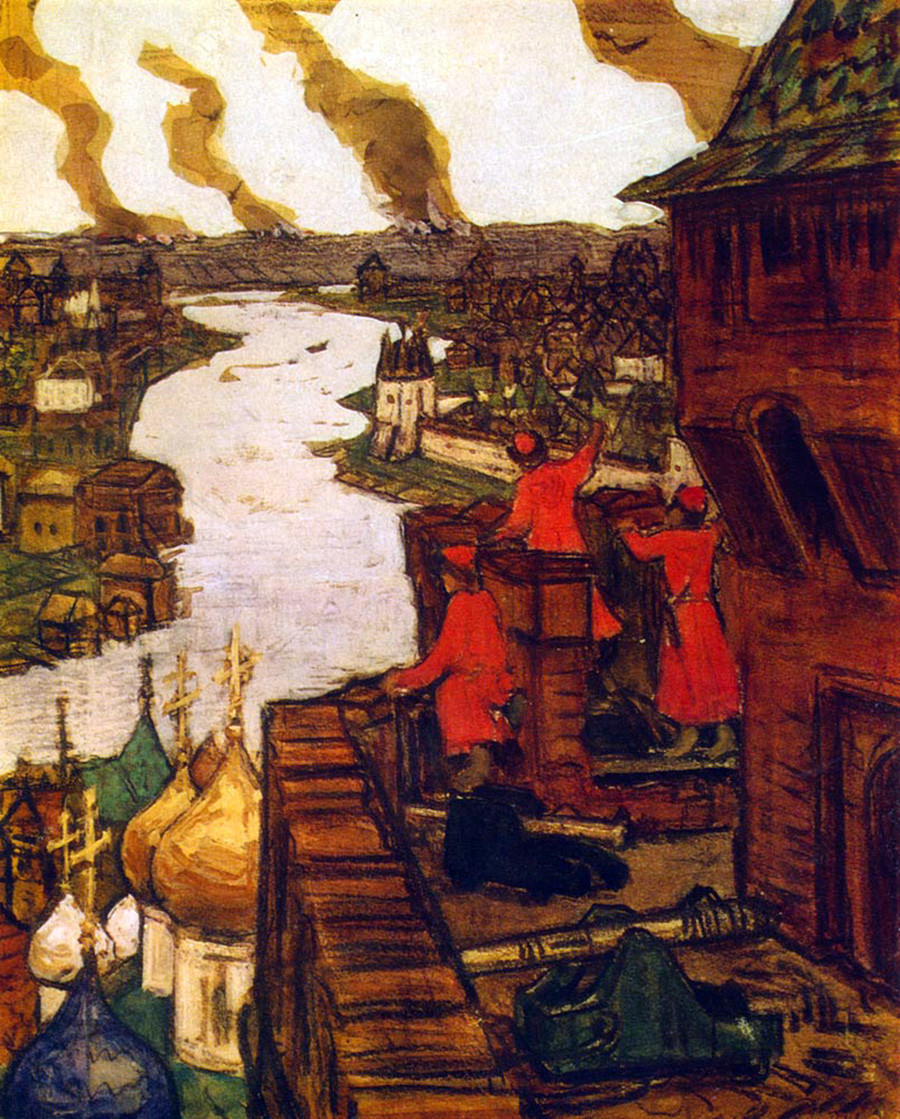
Ready for the Campaign (The Varangian Sea) by Nicholas Roerich.
International Centre of the Roerichs.“From the fury of the Northmen deliver us, o Lord.” The wording of this possibly apocryphal prayer effectively conveys the terror felt by Europeans about barbaric Viking raids in the early Middle Ages (the end of the 1st millennium AD). For a couple of centuries, Vikings terrorized England, Scotland, Ireland and other countries. However, in Eastern
Prince Vladimir, who brought Christianity to Rus’, used the support of Varangians to capture the capital city, Kiev, in 979. According to ancient chronicles, when they became burdensome (largely because they demanded a lot for their services – namely a contribution from every person in Kiev) he decided to send them away to the Byzantine Empire. Before doing so, however, he sent a message to the emperor, warning him not to let the Varangians stay as one unit in the capital since they could become dangerous

The Invitation of the Varangians: Rurik and his brothers arrive in Staraya Ladoga by Viktor Vasnetsov.
Public DomainAt the same time, the relationship between the Slavs and the Varangians was not always harmonious. Some evidence of this comes from a story lying at the foundation of the Russian state. According to the oldest chronicles, the Slavs in Novgorod invited the Varangian prince, Rurik, with his retinue. Some Russian historians have argued that Rurik was called in as a mercenary and a military leader but then organized a coup, overthrew local elders and became a ruler in northern Slavic territories.
Later on, the dynasty he established controlled all of the ancient Russian territories. In his explanation of how this happened, the Russian historian Vasiliy Klyuchevsky referred to the notes of one Jewish traveler during the 10th century who wrote that some Northern tribes “who gained control over Slavs still live among them, adopted their language and mixed with them”.
Around the same

The Pechenegs slaughter the "Scythians" of Sviatoslav I of Kiev from The Madrid Skylitzes.
Public Domain. “Their advance is like a strike of a lightning, the retreat is both tough and light: It is tough because of the war trophies that they carry, and light since it is so fast. […] They rob other countries since they do not have their own.
However, the chronicles point out that by the next century the Pechenegs were being hired by the princes of Rus’ and even served as troops protecting its borders. A similar story occurred with the next wave of nomads – the Kipchaks who replaced the Pechenegs.
The pattern with nomadic mercenaries was once again repeated in the 13th century, although there were some differences. This time it was the Tatars. They came in as the cruelest invaders in Russian history, but pretty soon, as was the case with their predecessors, they became a tool in the internal political struggles of Rus’. When, for instance, in 1293 one of the princes, Andrei of Gorodets, decided to challenge the authority of his brother, the Grand Duke of Vladimir, he brought a huge army of Tatars that devastated fourteen ancient Russian cities. They say that even in the

Tatars are coming! by Apollinary Vasnetsov.
Ulyanovsk Regional Art Museum.Later on, however, hand in hand with the growing might of the Moscow tsardom, some Tatar territories were incorporated into the Russian state, and the Tatars were turned into obedient servants of a tsar with a special status similar to that of the Cossacks.
If using any of Russia Beyond's content, partly or in full, always provide an active hyperlink to the original material.
Subscribe
to our newsletter!
Get the week's best stories straight to your inbox